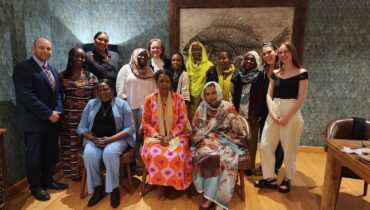By Ambassador Melanne Verveer
Originally posted in Huffington Post here.
In April 2014, the world’s attention turned to Nigeria as word spread that the militant group Boko Haram had kidnapped some 257 schoolgirls from Chibok and held them hostage. Boko Haram, which translates to “Western education is forbidden,” reportedly sold girls into slavery, and forced them to convert to Islam and marry members of the group. Since then, Boko Haram has continued its violent political agenda by specifically targeting civilians, including multiple attacks on schools, colleges, and universities. These acts of violence have rightly triggered a global outcry from world leaders and civil society activists, including in the form of the#BringBackOurGirls campaign. Despite the international response, the girls have not been released. Ensuring safe access to education is critical in Nigeria and in other places from Afghanistan to Sudan.
Across the globe, 62 million girls are out of school, and millions more are fighting to stay there. In Nigeria, the number of children out of school represents almost 20 percent of the world total. The majority of children not in school are in conflict-affected and emergency-stricken areas. Girls often face safety and security threats that undermine their access to education, such as sexual violence, acid attacks, and death threats, and these challenges are worsened by protracted violent conflicts. In these conflict regions, families are often forced to make an agonizing choice: to send their daughters to school and possibly risk their lives, or to keep them out of school and jeopardize their potential. In many places, such as Yemen, Bangladesh, and Niger, early and forced marriage keeps girls out of school against their wishes. The World Health Organization estimates that 39,000 girls are subjected to child marriage every day and that, without drastic change, some 50 million girls will be married off before the age of 15 between 2011 and 2010. In addition to losing out on education and economic opportunities, child brides are more susceptible to maternal mortality or morbidity, more likely to face intimate partner violence, and sexual violence compared to those who marry as adults.
Ensuring girls have safe and continued access to education is critical, not only on an individual basis but also on a global scale. Research shows that educating girls is the smartest socioeconomic investment that any community or country can make, resulting in stronger families, communities and countries. As we have seen, educating girls has a multiplier effect with benefits in health, broad-based economic growth and poverty reduction. When 10% more girls go to school, a country’s GDP increases on average by 3%. Wages rise 20% for every year beyond 4th grade that a girl remains in school.
Mothers are their children’s first teachers. When girls stay in school, early marriage rates drop and their children are also more likely to be educated. However, there are numerous barriers that prevent girls from continuing on to secondary education. Some parents choose to enroll their sons rather than their daughters. Many schoolslack access to sanitation for girls, and cultural norms can forbid girls from attending school while they are menstruating. Girls drop out due to inability to afford school fees, or the need to earn an income for their family. It is critical that these barriers are reduced and girls remain in school.
At the same time, it is important to remember that safe access to education is needed worldwide for girls and boys. There would be a 12 percent drop in global poverty if all students in low-income countries left school with basic reading skills. Education has been shown to be a life-saving intervention, particularly in regions of conflict and disaster. Each additional year of schooling for a country’s population reduces the changes of falling into civil war by 3.6%. Research and experience tell us that we can and must do better.
Individuals and groups from around the world are partnering to ensure that girls have safe access to education. From the Malala Fund to USAID’s Let Girls Learn Initiative, from Girl Rising to A World at School, millions of dollars are being invested in girls’ education worldwide. At the Clinton Global Initiative this week, a $600 million commitment was made by a range of donors to support girls secondary education in Africa and southeast Asia. In investing in education for boys and girls, we invest in stronger societies, more prosperous economies, and reinforce world peace and stability. All of us must do our parts: governments, civil society and the private sector. This must be our common cause.
Watch the video and read the conversation from the Symposium on Advancing Safe Access to Education for Girls in Nigeria and Beyond featuring USAID Administrator Raj Shah and Nigerian Finance Minister Ngozi Okonjo-Iweala hosted by the Georgetown Institute for Women, Peace & Security at #SecureGirlsEd.


